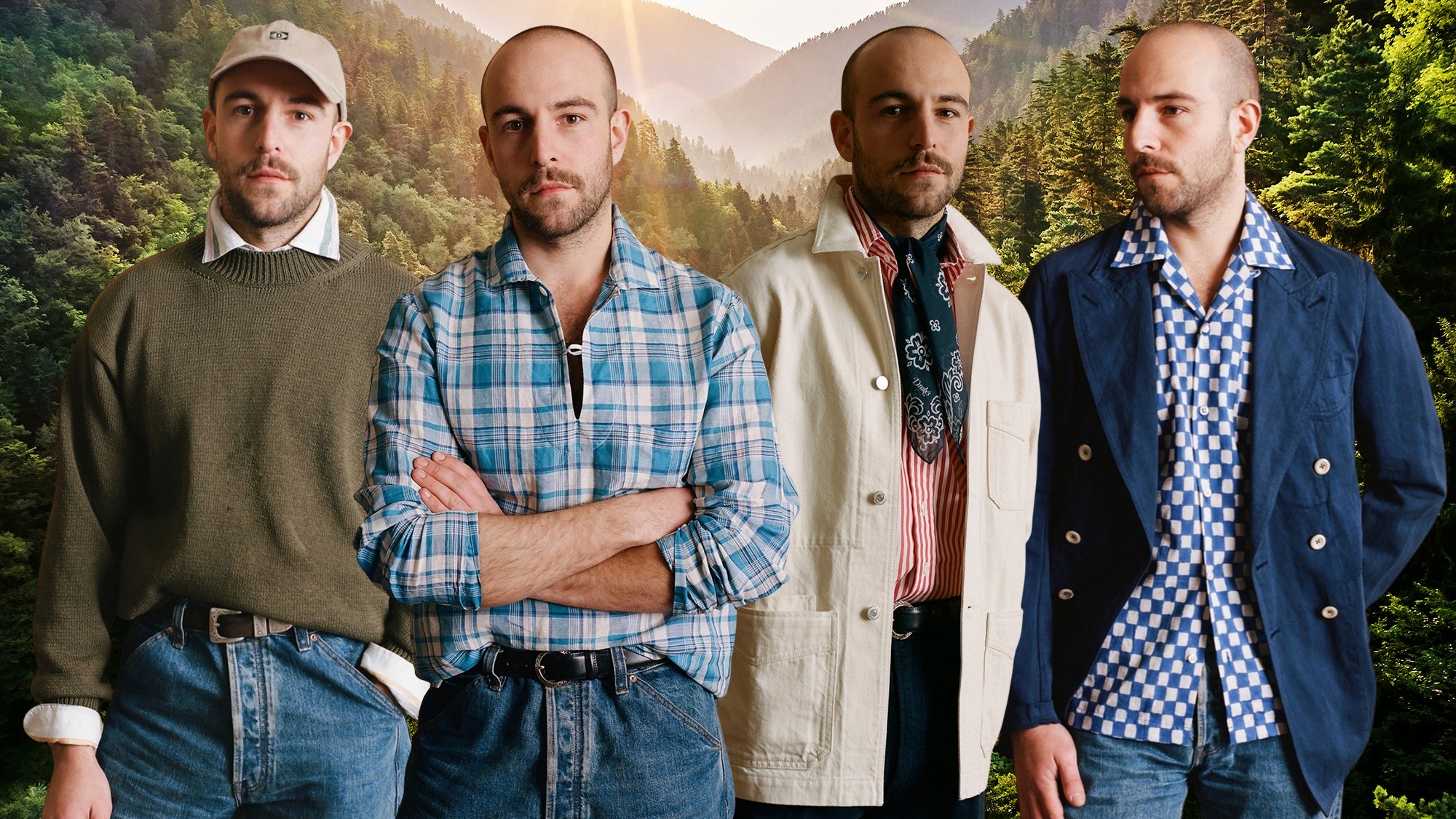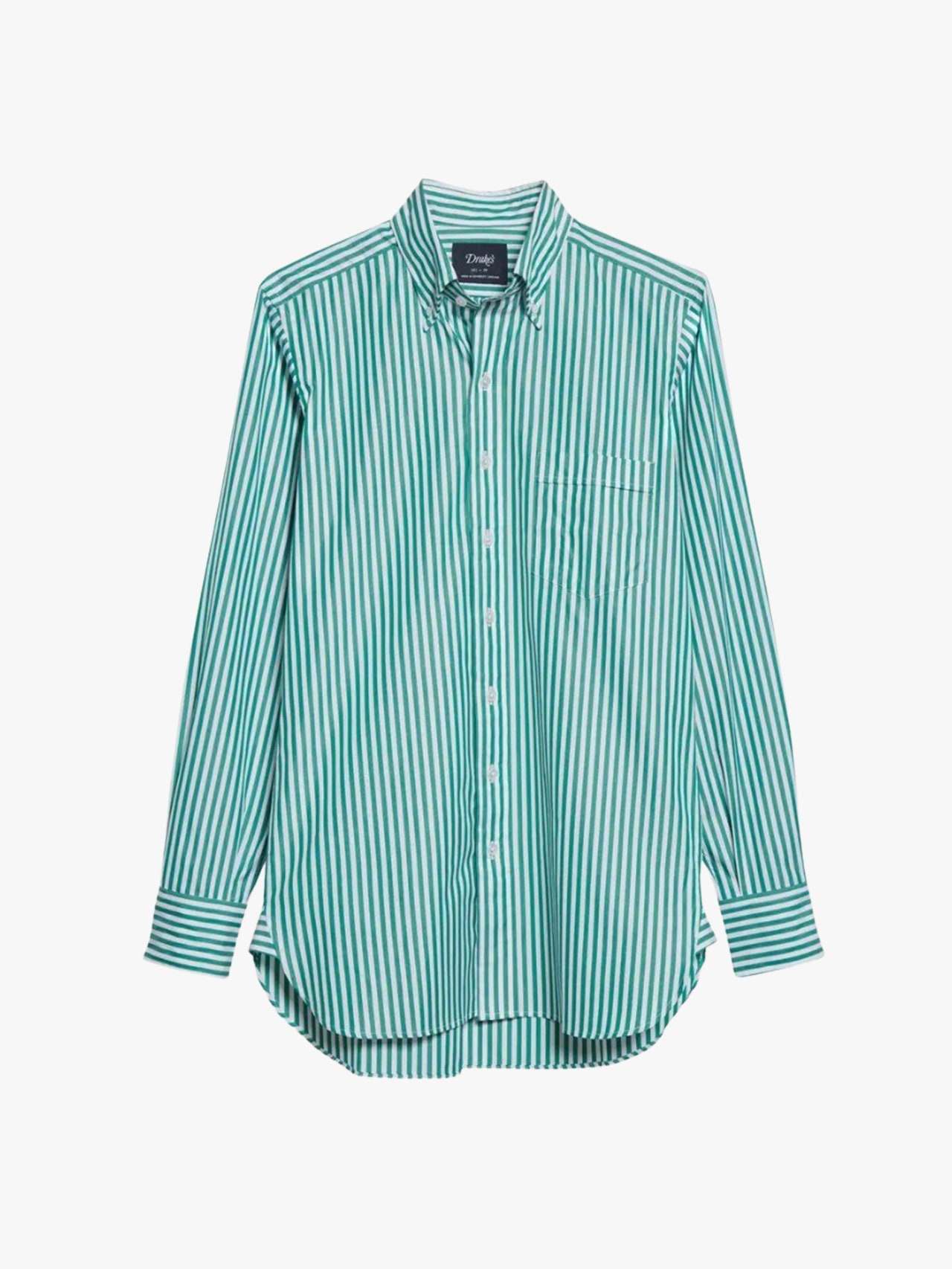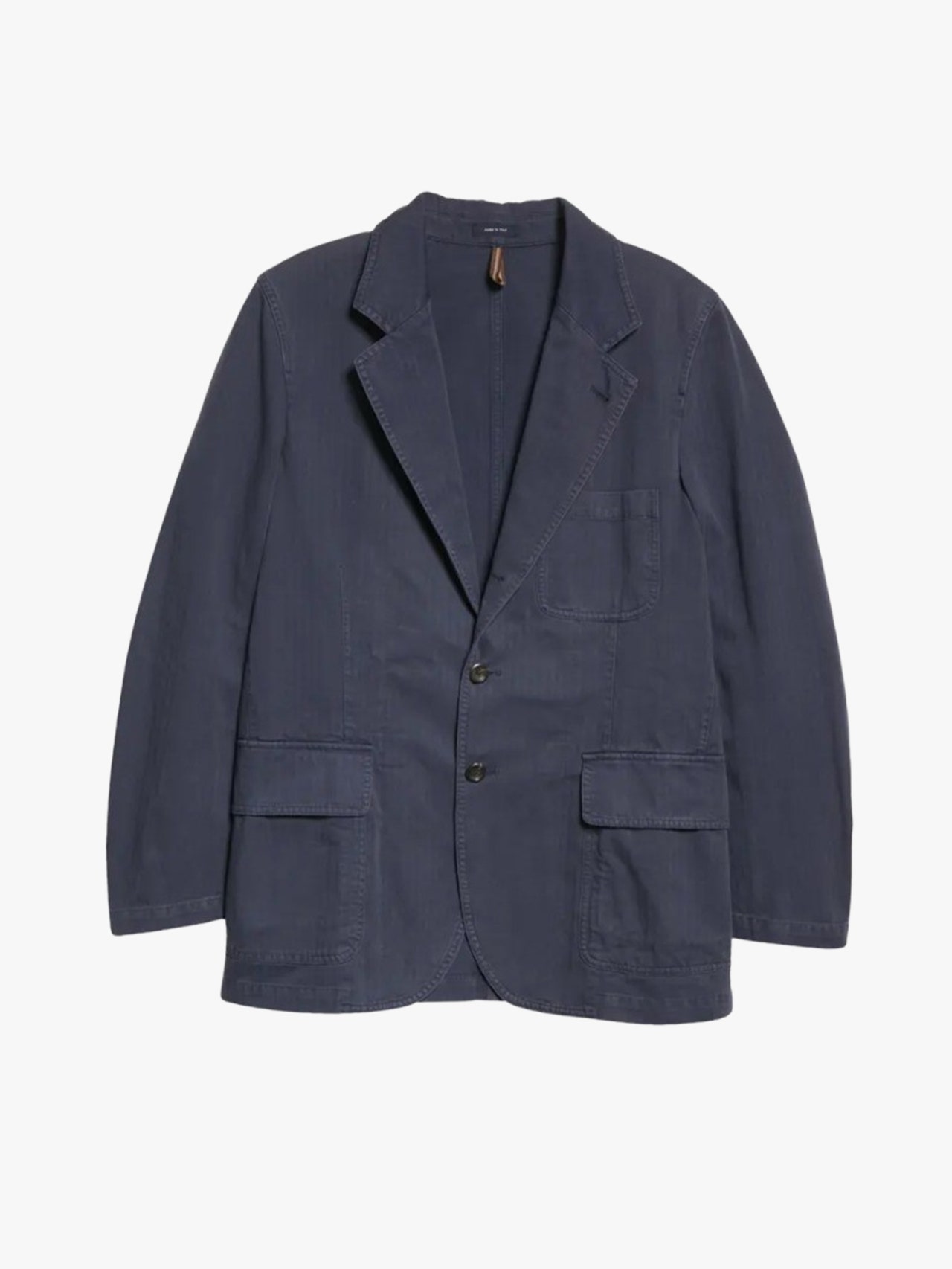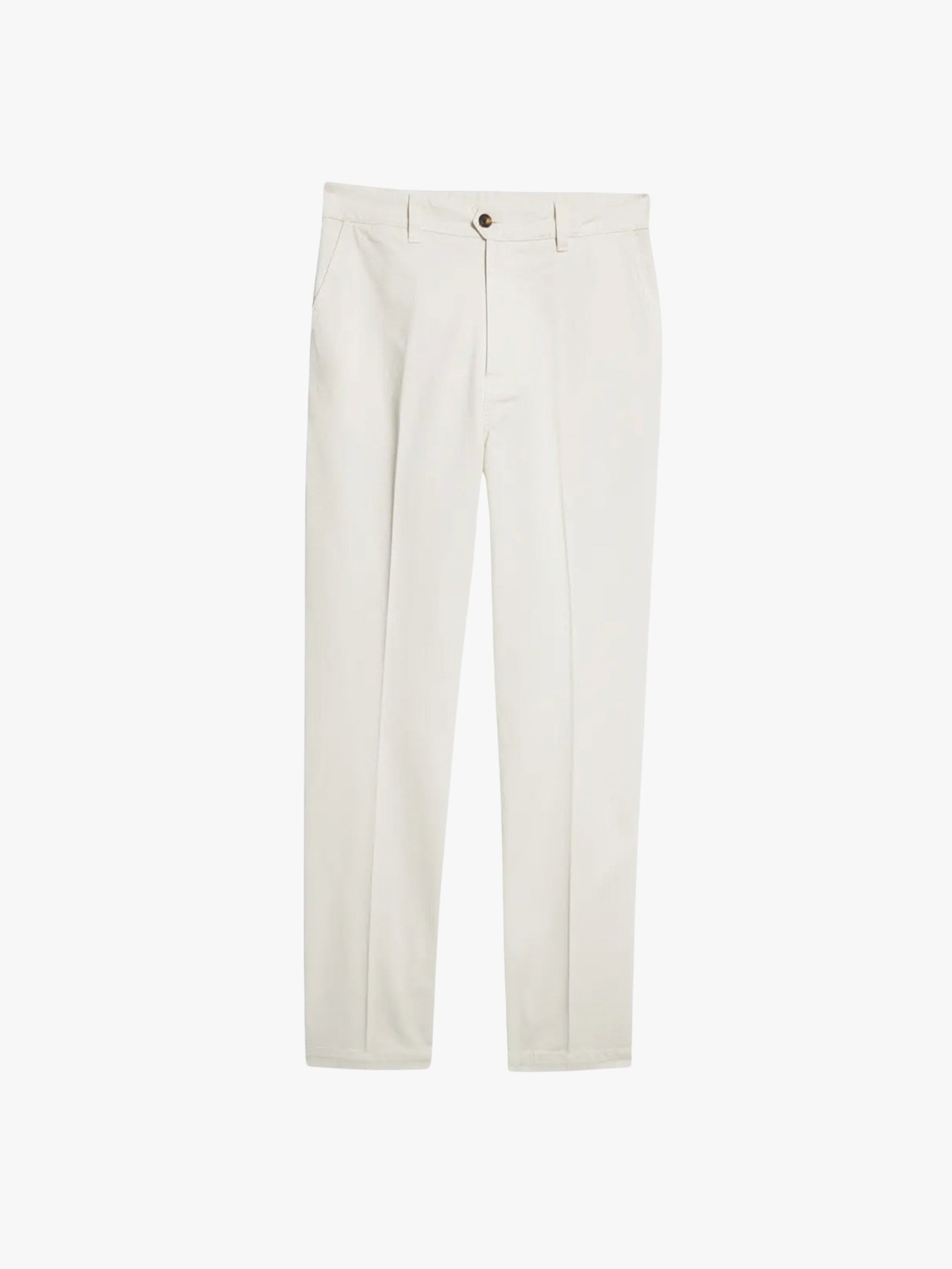All products featured on GQ are independently selected by our editors. However, when you buy something through our retail links, we may earn an affiliate commission.
When Michael Hill became the creative director of Drake’s, in 2010, it felt like a homecoming. Decades earlier, Hill's father had worked with Michael Drake on an early version of his namesake brand, manufacturing private-label ties for other designers. Before Hill took over, Drake’s was mostly known for its brightly-patterned accessories, a chummy haberdasher with a store around the corner from Savile Row. Thirteen years later, Hill has reimagined the beloved British imprint as a lifestyle outfitter oddly attuned to the zeitgeist. Drake’s still makes exquisite silk ties—but it also sells striped poplin shirts, gently-structured blazers, and sweaters festooned with prints so vivid they’d make Hieronymus Bosch blush.
Under the stewardship of the elder Michael, Drake’s was never stuffy, exactly, but it skewed traditional. For the most part, the brand catered to gents who wore suits because they had to, and were eager to spruce them up with a foulard tie or jazzy pocket square. With Hill at the helm, Drake’s has evolved into something far more surprising: the vibey epicenter of menswear’s prep resurgence, a one-stop-shop for guys excited about tailoring again after years swaddled in designer sweats.
Hill, who first joined Drake’s in 2003, didn’t make the decision to expand beyond accessories on a whim. But he wasn’t naive, either: by the early 2000s, men were already starting to abandon what he calls “the classic sartorial uniform”, and ties, no matter how beautiful, could only take the brand so far. So he started thinking about shirts, the one garment you can't (or shouldn't) wear a tie without. In lieu of working with a local factory to develop the brand’s new line of Oxford cloth button-downs, Drake's invested in one of its own, a historic space in Somerset that used to house Cleeve of London, the heritage British shirtmaker. Direct access to their own production channels allowed the brand to “learn how to do all of those elements really well,” Hill says—and the foresight paid off.
In the coming years, Drake's expanded into one new category after another, turning out suede chukka boots that caught the attention of another quippy British institution, and colorblocked fleeces that appealed to the next generation of 9-to-5ers. But Hill's gamble really took off with the debut of the Games blazer, an unstructured, machine-washable suit jacket that emphasized the brand’s tailoring pedigree—by then, it had opened a store on Savile Row proper—and introduced it to a new cohort of suiting enthusiasts. It didn’t take long for the Games to become a hit. Today, the blazer is available in hardy tweeds, nubby linens, and plush corduroys, and it remains a year-round best-seller, an ideal gateway to the expansive Drake’s universe. (It also costs about $1,000; nobody said looking like a wayward member of the aristocracy would come cheap!)
For Jian DeLeon, the men’s fashion director of Nordstrom, the Games represents one of the brand’s defining products thanks, in part, to how uniquely Drake’s it feels. Over the years, the brand has developed an uncanny knack for “marrying classic clothing with an approach and lifestyle that isn't so pretentious,” he says. At first, customers might wind up at Drake’s on their search to find the perfect button-up, until suddenly, “it's their favorite shirt brand, or it's, like, ‘I need all [of the] colors of these jeans.’"
Craftsmanship and heritage are always valuable currencies in the menswear market, but a little hype never hurts, either. So, in 2019, Drake’s began an ongoing collaboration with the savvy neo-prepsters at Aimé Leon Dore. Like any good melding of menswear minds, the partnership helped paint both labels in a slightly new light. It bolstered ALD’s status as a name with more to offer than buzzy sneakers, luxe sweats, and a mean Fredo cappuccino. In return, Drake’s became not just a trusted source of menswear, but a coveted one. The collaboration catalyzed a surge of interest in the British label, and presented Hill with a welcome challenge. “We’d love to hold onto and show those new customers products for the next 20 years that they're going to love,” he says. With a sudden injection of street cred stateside, he set out to do just that; last year, Drake’s opened a store on New York’s Canal Street, planting its flag a few blocks away from ALD’s thrumming flagship.
Hill is well aware that Drake’s isn’t the kind of company that can survive on buzz alone, and he remains cautious of growing too fast. Since 2010, he estimates sales have increased at a modest pace—from around $4 million to $15 million in annual revenue. “We won't conquer the world in five minutes,” he says, “but that's not the point.” In 2023, brands that once traded in hoodies and tees are rushing to crank out tailored jackets, dressy collared shirts, and proper trousers. (Even status-y ties are enjoying a bit of resurgence, though Hill admits their heyday is probably behind them.) But for Drake’s, the hallmarks of the prep resurgence aren’t designed to catch the style pendulum as it swings back towards the classics—they’re the bedrock of a brand that has captured the moment by refusing to kowtow to it.
“If you do the classics in a fresh way—in a way that feels right, with all the right ingredients—you're always going to have a customer,” Hill maintains. No matter which way the tailwinds blow, Drake's will stick to its soft-shouldered guns, quietly shaping the menswear landscape behind the scenes. Hill is sanguine about Drake's' current positioning in the menswear conversation, but he's bullish about its future. After all, if an artisanal British tiemaker could inadvertently bend the zeitgeist to its will, the audience for Drake's' vision of ultra-refined prep—$500 cricket sweaters, $900 barn coats—is broader than he ever imagined. World domination might not be the point, but, Hill says: “There are a lot more people that we want to show our goods to."














